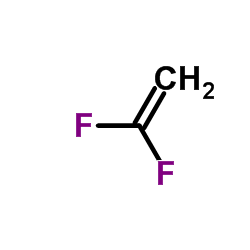Osteoblast, fibroblast and in vivo biological response to poly(vinylidene fluoride) based composite materials.
R Costa, C Ribeiro, A C Lopes, P Martins, V Sencadas, R Soares, S Lanceros-Mendez
文献索引:J. Mater. Sci. Mater. Med. 24(2) , 395-403, (2013)
全文:HTML全文
摘要
Electroactive materials can be taken to advantage for the development of sensors and actuators as well as for novel tissue engineering strategies. Composites based on poly(vinylidene fluoride), PVDF, have been evaluated with respect to their biological response. Cell viability and proliferation were performed in vitro both with Mesenchymal Stem Cells differentiated to osteoblasts and Human Fibroblast Foreskin 1. In vivo tests were also performed using 6-week-old C57Bl/6 mice. It was concluded that zeolite and clay composites are biocompatible materials promoting cell response and not showing in vivo pro-inflammatory effects which renders both of them attractive for biological applications and tissue engineering, opening interesting perspectives to development of scaffolds from these composites. Ferrite and silver nanoparticle composites decrease osteoblast cell viability and carbon nanotubes decrease fibroblast viability. Further, carbon nanotube composites result in a significant increase in local vascularization accompanied an increase of inflammatory markers after implantation.
相关化合物
| 结构式 | 名称/CAS号 | 分子式 | 全部文献 |
|---|---|---|---|
 |
聚偏氟乙烯树脂
CAS:24937-79-9 |
C2H2F2 |
|
Sensitivity of pressure sensors enhanced by doping silver na...
2014-01-01 [Sensors (Basel.) 14(6) , 9889-99, (2014)] |
|
A new method for permeability measurement of hydrophobic mem...
2013-04-15 [Water Res. 47(6) , 2096-104, (2013)] |
|
Preparation of polyvinylidene fluoride nanofiber membrane an...
2013-09-01 [J. Nanosci. Nanotechnol. 13(9) , 6269-74, (2013)] |
|
Modulation of biocompatibility on poly(vinylidene fluoride) ...
2012-11-01 [J. Biomed. Mater. Res. A 100(11) , 3177-88, (2012)] |
|
Separation of oil/water emulsion using nano-particle (TiO(2)...
2013-01-01 [Water Sci. Technol. 67(3) , 477-84, (2013)] |